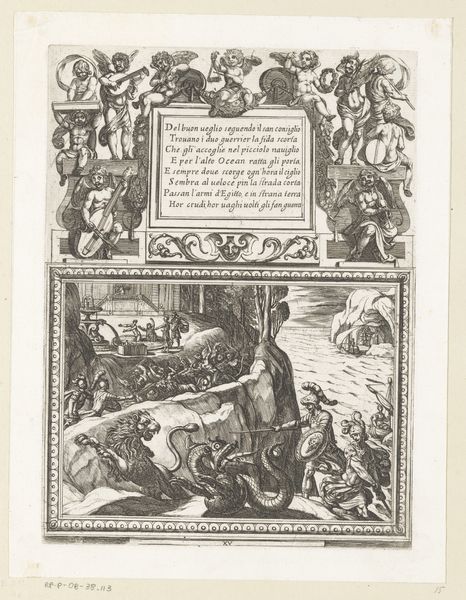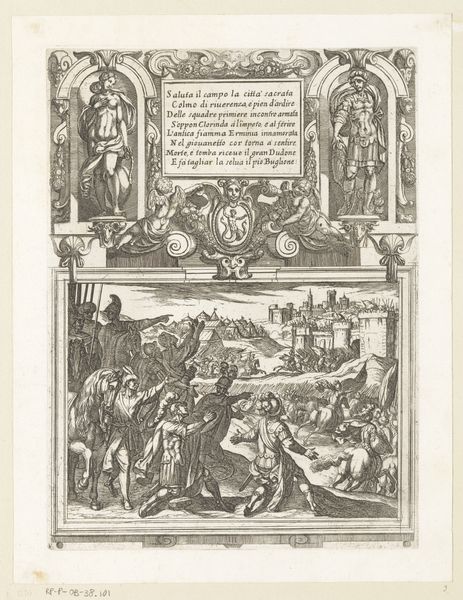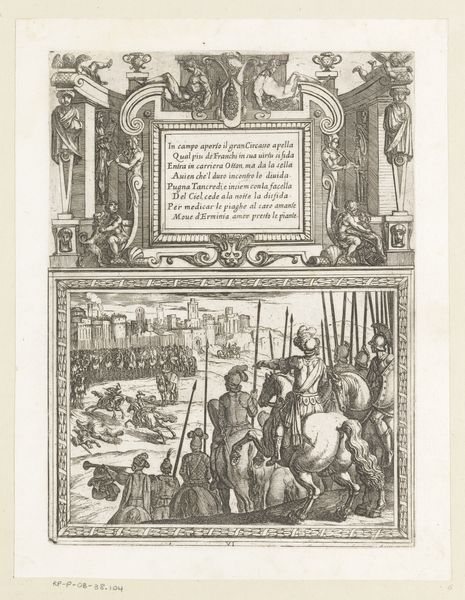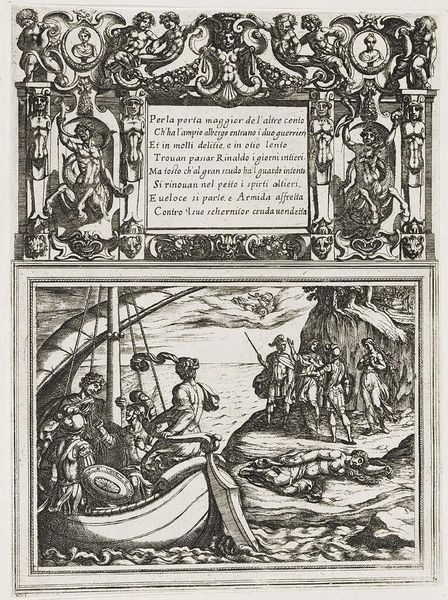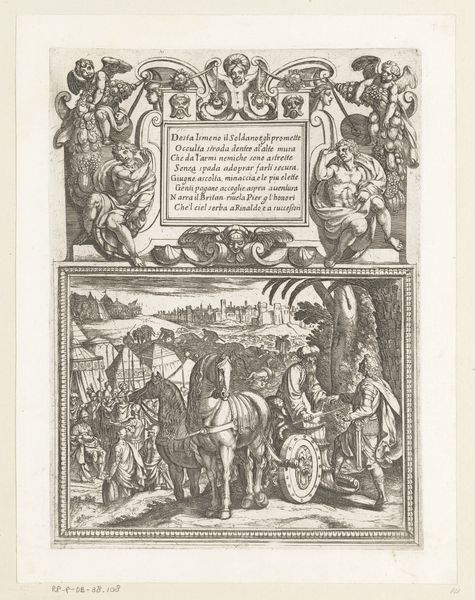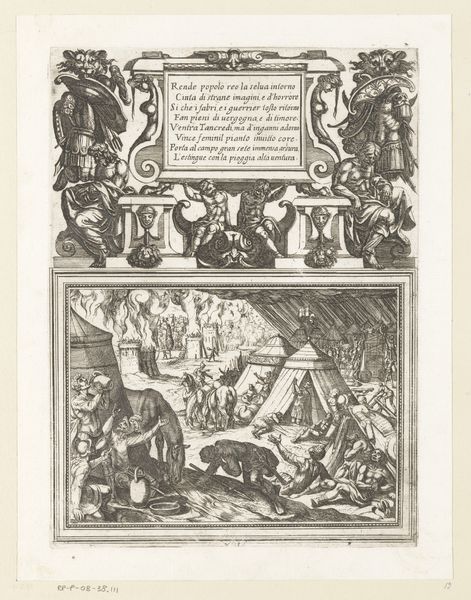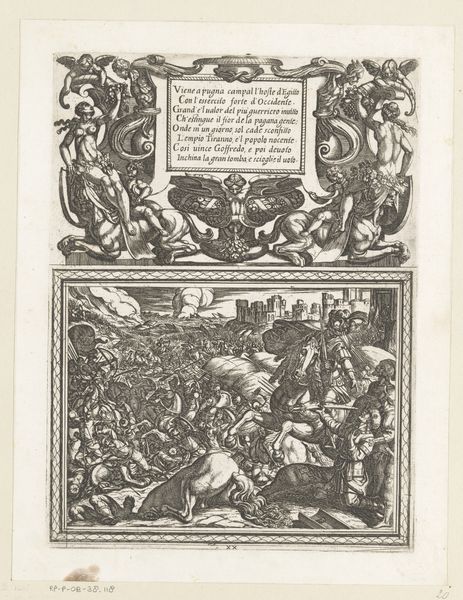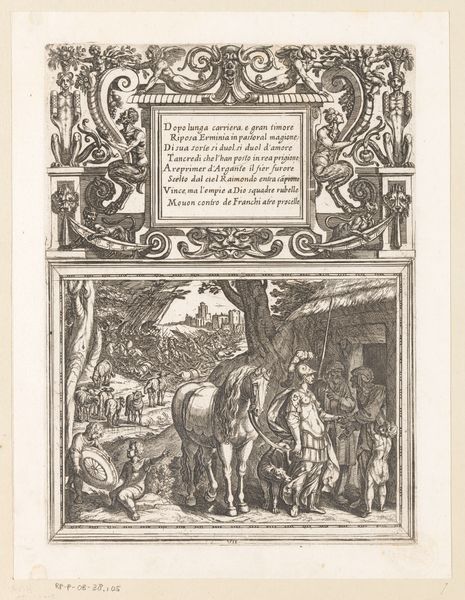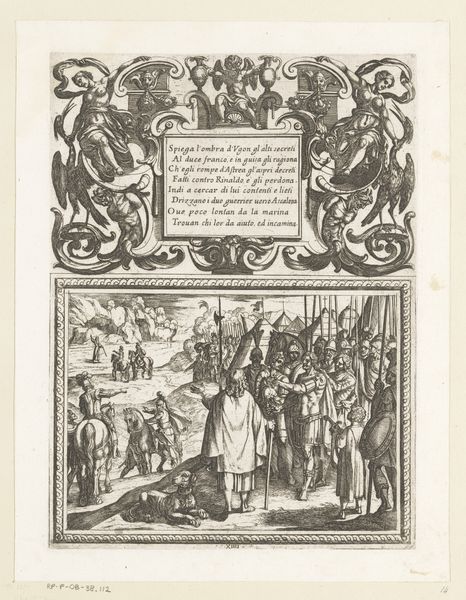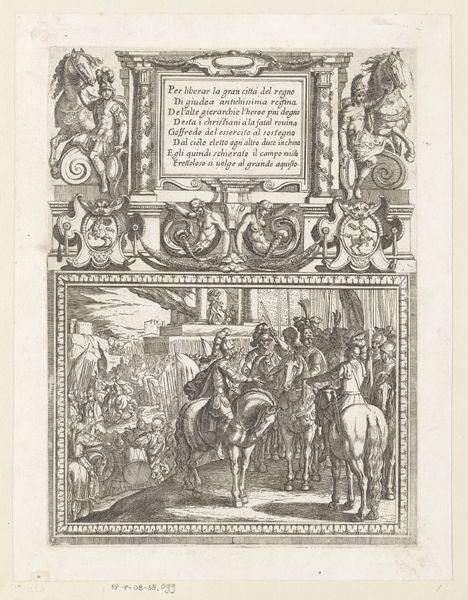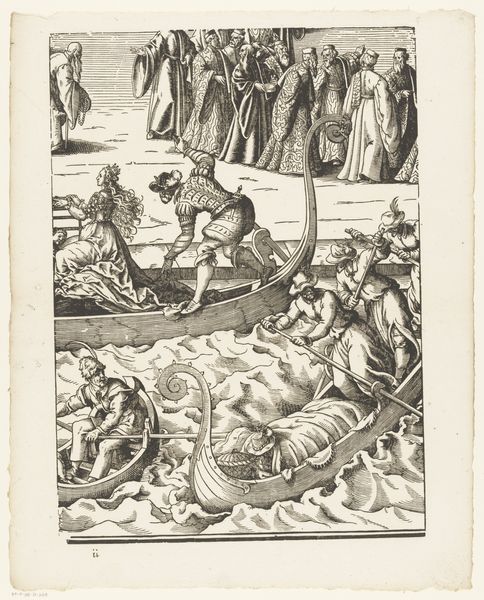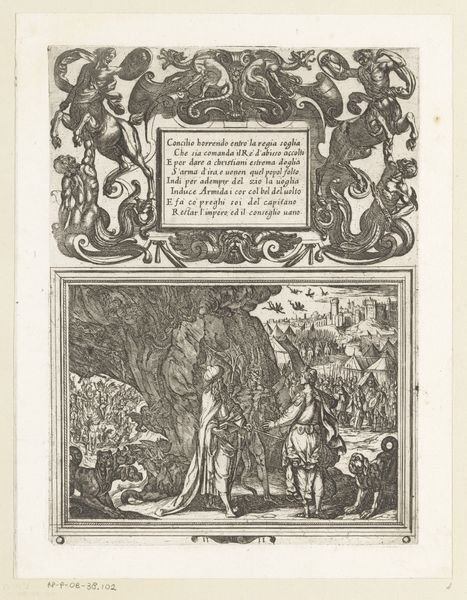
Illustratie bij Canto XVI van Tasso's 'Gerusalemme Liberata' 1565 - 1630
0:00
0:00
print, engraving
#
narrative-art
# print
#
old engraving style
#
landscape
#
figuration
#
history-painting
#
italian-renaissance
#
engraving
Dimensions: height 275 mm, width 204 mm
Copyright: Rijks Museum: Open Domain
Antonio Tempesta created this etching, "Illustration for Canto XVI of Tasso's 'Jerusalem Delivered,'" sometime between 1575 and 1630. It reflects the cultural and social values of the late Renaissance, a period marked by religious conflict and the rise of absolutist power. In the print, we see a scene rife with tension: knights disembark from a ship, encountering a lifeless body on the shore. Tempesta visualizes Torquato Tasso's epic poem, framing the complex relationship between the warrior Rinaldo and the sorceress Armida. Their interactions oscillate between love, captivity, and revenge, embodying the gendered power dynamics of the era. Armida, though powerful, is ultimately portrayed as vengeful and scorned, confined to seeking "crude vendetta." Tempesta invites us to consider how societal expectations and biases shape our understanding of gender, power, and justice. What does it mean to depict Armida's desire for vengeance, and what does this tell us about the fears and expectations projected onto women during this period?
Comments
No comments
Be the first to comment and join the conversation on the ultimate creative platform.
